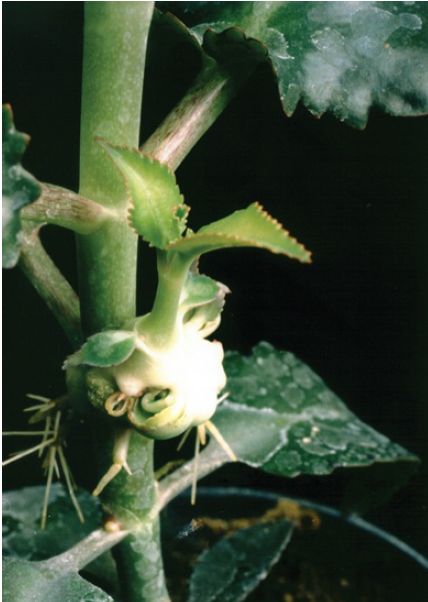

النبات

مواضيع عامة في علم النبات

الجذور - السيقان - الأوراق

النباتات الوعائية واللاوعائية

البذور (مغطاة البذور - عاريات البذور)

الطحالب

النباتات الطبية


الحيوان

مواضيع عامة في علم الحيوان

علم التشريح

التنوع الإحيائي

البايلوجيا الخلوية


الأحياء المجهرية

البكتيريا

الفطريات

الطفيليات

الفايروسات


علم الأمراض

الاورام

الامراض الوراثية

الامراض المناعية

الامراض المدارية

اضطرابات الدورة الدموية

مواضيع عامة في علم الامراض

الحشرات


التقانة الإحيائية

مواضيع عامة في التقانة الإحيائية


التقنية الحيوية المكروبية

التقنية الحيوية والميكروبات

الفعاليات الحيوية

وراثة الاحياء المجهرية

تصنيف الاحياء المجهرية

الاحياء المجهرية في الطبيعة

أيض الاجهاد

التقنية الحيوية والبيئة

التقنية الحيوية والطب

التقنية الحيوية والزراعة

التقنية الحيوية والصناعة

التقنية الحيوية والطاقة

البحار والطحالب الصغيرة

عزل البروتين

هندسة الجينات


التقنية الحياتية النانوية

مفاهيم التقنية الحيوية النانوية

التراكيب النانوية والمجاهر المستخدمة في رؤيتها

تصنيع وتخليق المواد النانوية

تطبيقات التقنية النانوية والحيوية النانوية

الرقائق والمتحسسات الحيوية

المصفوفات المجهرية وحاسوب الدنا

اللقاحات

البيئة والتلوث


علم الأجنة

اعضاء التكاثر وتشكل الاعراس

الاخصاب

التشطر

العصيبة وتشكل الجسيدات

تشكل اللواحق الجنينية

تكون المعيدة وظهور الطبقات الجنينية

مقدمة لعلم الاجنة


الأحياء الجزيئي

مواضيع عامة في الاحياء الجزيئي


علم وظائف الأعضاء


الغدد

مواضيع عامة في الغدد

الغدد الصم و هرموناتها

الجسم تحت السريري

الغدة النخامية

الغدة الكظرية

الغدة التناسلية

الغدة الدرقية والجار الدرقية

الغدة البنكرياسية

الغدة الصنوبرية

مواضيع عامة في علم وظائف الاعضاء

الخلية الحيوانية

الجهاز العصبي

أعضاء الحس

الجهاز العضلي

السوائل الجسمية

الجهاز الدوري والليمف

الجهاز التنفسي

الجهاز الهضمي

الجهاز البولي


المضادات الميكروبية

مواضيع عامة في المضادات الميكروبية

مضادات البكتيريا

مضادات الفطريات

مضادات الطفيليات

مضادات الفايروسات

علم الخلية

الوراثة

الأحياء العامة

المناعة

التحليلات المرضية

الكيمياء الحيوية

مواضيع متنوعة أخرى

الانزيمات
The Bacterial Ti Plasmid Causes Crown Gall Disease in Plants
المؤلف:
JOCELYN E. KREBS, ELLIOTT S. GOLDSTEIN and STEPHEN T. KILPATRICK
المصدر:
LEWIN’S GENES XII
الجزء والصفحة:
10-4-2021
1957
The Bacterial Ti Plasmid Causes Crown Gall Disease in Plants
KEY CONCEPTS
-Infection with the bacterium Agrobacterium tumefaciens can transform plant tissue into tumors.
-The infectious agent is a plasmid carried by the bacterium.
-The plasmid also carries genes for synthesizing and metabolizing opines (arginine derivatives) that are used by the bacterium.
Most events in which DNA is rearranged or amplified occur within a genome, but the interaction between bacteria and certain plants involves the transfer of DNA from the bacterial genome to the plant genome. Crown gall disease, shown in FIGURE 1, can be induced in most dicotyledonous plants by the soil bacterium Agrobacterium tumefaciens. The bacterium is a parasite that effects a genetic change in the eukaryotic host cell, with consequences for both parasite and host: It improves conditions for survival of the parasite and causes the plant cell to grow as a tumor.

FIGURE 1. An Agrobacterium carrying a Ti plasmid of the nopaline type induces a teratoma, in which differentiated structures develop.
Photo courtesy of the estate of Jeff Schell. Used with permission of the Max Planck Institute
for Plant Breeding Research, Cologne.
Agrobacteria are required to induce tumor formation, but the tumor cells do not require the continued presence of bacteria. As with animal tumors, the plant cells have been transformed into a state in which new mechanisms govern growth and differentiation.
Transformation is caused by the expression within the plant cell of genetic information transferred from the bacterium. The tumor-inducing principle of Agrobacterium resides in the Ti plasmid, which is perpetuated as an independent replicon within the bacterium. The plasmid carries genes involved in various bacterial and plant cell activities, including those required to
generate the transformed state, and a set of genes concerned with synthesis or utilization of opines (novel derivatives of arginine).
Ti plasmids (and thus the Agrobacteria in which they reside) can be divided into four groups, according to the types of opine that are made:
Nopaline plasmids carry genes for synthesizing nopaline in tumors and for utilizing it in bacteria. Nopaline tumors can differentiate into shoots with abnormal structures. They have been called teratomas by analogy with certain mammalian tumors that retain the ability to differentiate into early embryonic structures.
Octopine plasmids are similar to nopaline plasmids, but the relevant opine is different. Octopine tumors are usually undifferentiated, however, and do not form teratoma shoots.
Agropine plasmids carry genes for agropine metabolism; the tumors do not differentiate, and they develop poorly and die early.
Ri plasmids can induce hairy root disease on some plants and crown gall on others. They have agropine-type genes, and can have segments derived from both nopaline and octopine plasmids.
The types of genes carried by a Ti plasmid are summarized in TABLE 1. Genes utilized in the bacterium encode proteins for plasmid replication and incompatibility, transfer between bacteria, sensitivity to phages, and synthesis of other compounds, some of which are toxic to other soil bacteria. Genes used in the plant cell encode proteins for transfer of DNA into the plant, induction of the transformed state, and shoot and root induction.
TABLE 1. Ti plasmids carry genes involved in both plant and bacterial functions.

The specificity of the opine genes depends on the type of plasmid. Genes needed for opine synthesis are linked to genes whose products catabolize the same opine; thus, each strain of Agrobacterium causes crown gall tumor cells to synthesize opines that are useful for survival of the parasite. The opines can be used as the sole carbon and/or nitrogen source for the inducing Agrobacterium strain. The principle is that the transformed plant cell synthesizes those opines that the bacterium can use.
 الاكثر قراءة في مواضيع عامة في الاحياء الجزيئي
الاكثر قراءة في مواضيع عامة في الاحياء الجزيئي
 اخر الاخبار
اخر الاخبار
اخبار العتبة العباسية المقدسة

الآخبار الصحية















 قسم الشؤون الفكرية يصدر كتاباً يوثق تاريخ السدانة في العتبة العباسية المقدسة
قسم الشؤون الفكرية يصدر كتاباً يوثق تاريخ السدانة في العتبة العباسية المقدسة "المهمة".. إصدار قصصي يوثّق القصص الفائزة في مسابقة فتوى الدفاع المقدسة للقصة القصيرة
"المهمة".. إصدار قصصي يوثّق القصص الفائزة في مسابقة فتوى الدفاع المقدسة للقصة القصيرة (نوافذ).. إصدار أدبي يوثق القصص الفائزة في مسابقة الإمام العسكري (عليه السلام)
(نوافذ).. إصدار أدبي يوثق القصص الفائزة في مسابقة الإمام العسكري (عليه السلام)


















